How to create brilliant drawings
Published on: 09 November 2022
BookTrust’s Writer-Illustrator in Residence Nick Sharratt share his tips on how to inspire children to create their own drawings and why drawing is so beneficial – for everyone!
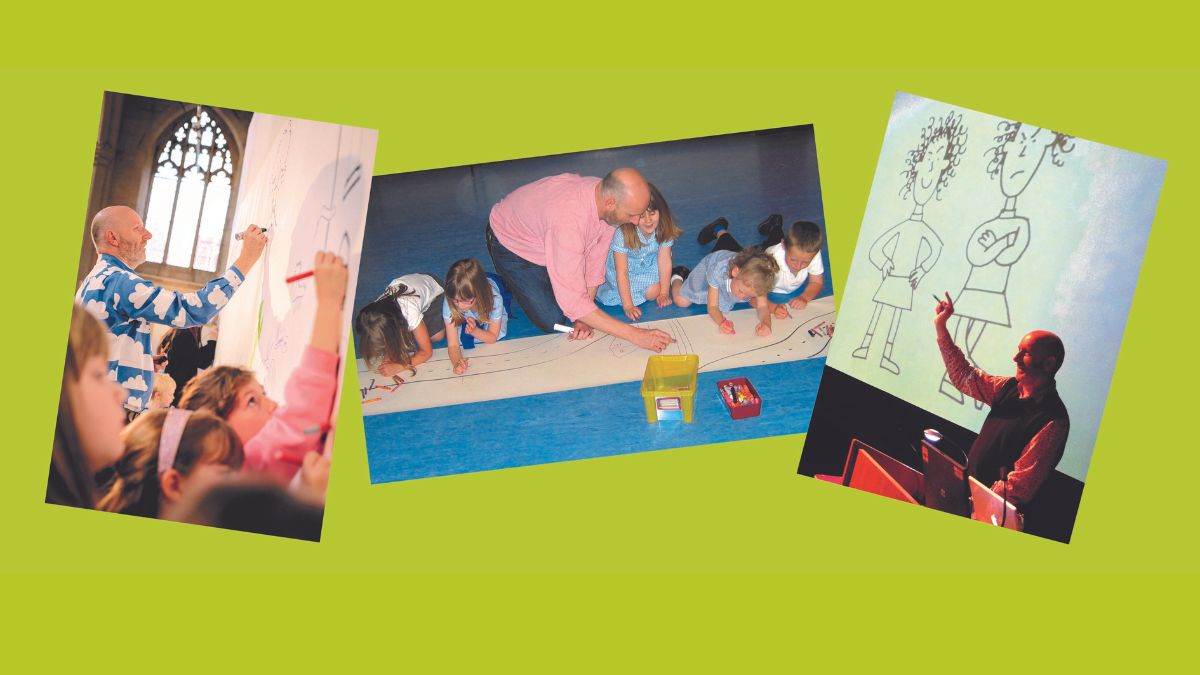
Everybody draw!
I’ve been making my living drawing pictures in books for over thirty years now, and for almost as long as that, on school and library visits and at book events all over the country, I’ve been encouraging everybody to draw. It’s such an important life skill, incorporating all kinds of useful thought processes and bringing so many rewards.
When you’re drawing, you’re using your creativity and exercising your imagination, you’re problem-solving, decision-making and applying logic. You’re doing a bit of unconscious maths, working out where to put things on the paper and what size to draw them. Drawing motivates you to take notice of the world around you and improves your powers of observation and your visual literacy. It benefits hand–eye coordination and helps develop fine motor skills involving the wrist and fingers. It calls upon your memory and prompts concentration and focus.
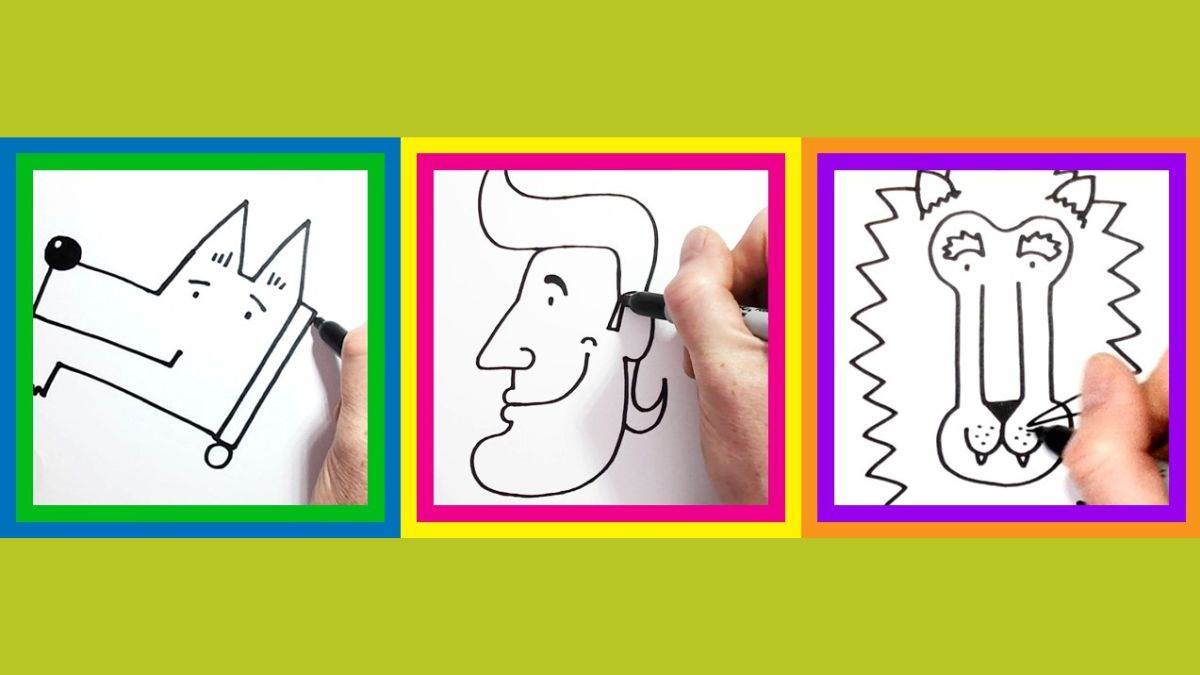
And aside from all that, drawing is the most brilliant form of communication and an amazing tool for self-expression. Drawing transcends language barriers and can serve as a way to convey feelings that are too difficult to get across in words. In the right conditions it should be a pleasurable, stress-reducing activity, enhancing self-esteem. The completion of a drawing ought to bring a real sense of accomplishment and satisfaction.
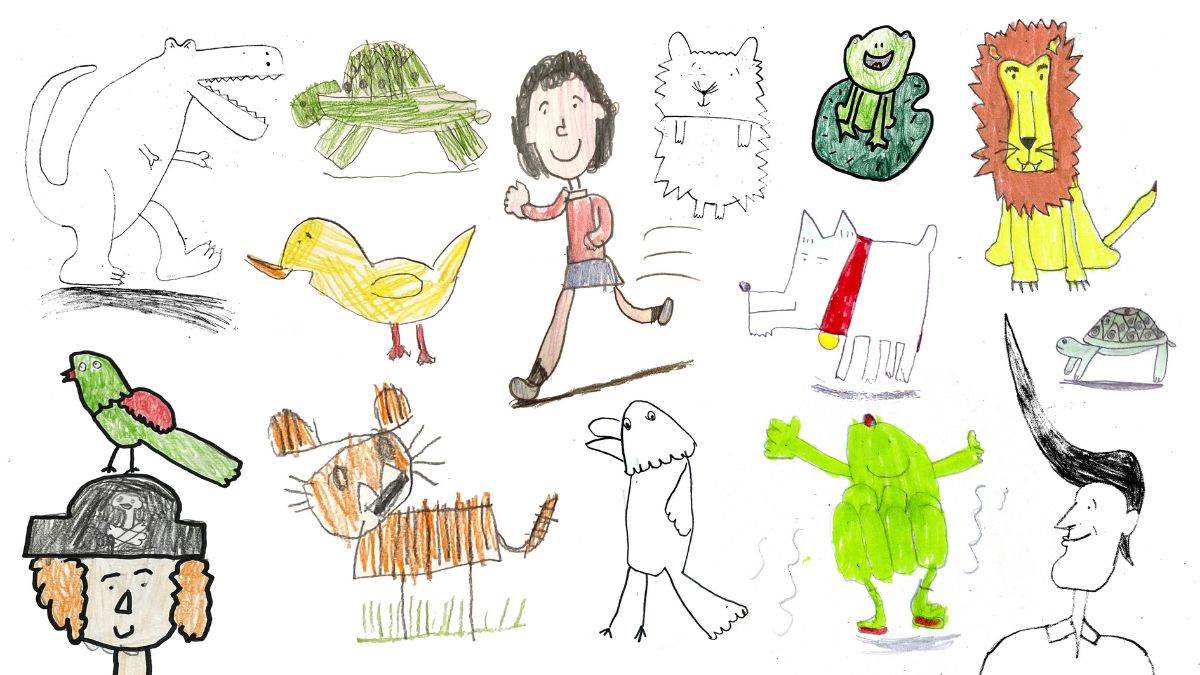
And yet… so many children seem to lose confidence in their drawing very early on, deciding it’s something they’re no good at, and pretty soon it gets abandoned as an activity altogether, never to be returned to again. I guess, at root, it’s matter of expectations, with those children thinking their drawings need to look a certain way and then feeling dispirited and self-conscious if they’ve not been able to achieve exactly that. The belief that ‘I can’t draw’ sets in and sticks for life. I think that’s a huge shame. I think everyone, young and old, CAN draw, and SHOULD draw now and again, for all the reasons mentioned earlier, but also, quite simply, because it’s actually really FUN!
Here are one or two of the things that I say and demonstrate on my school and library visits and at my book events to encourage children from nursery upwards – and adults too – to get over their hesitations about drawing. Little tips like these do seem to help and might prove useful both at home and in the classroom.
I like to start off by saying that there are no rules about drawing, other than it should be fun, but if you’re drawing with a pencil, it’s a good idea to press down hard enough to get a good, dark line, rather than a very pale, thin one. Drawing with a strong, confident line will help make your pictures look like you really believe in them, and other people will believe in them too!
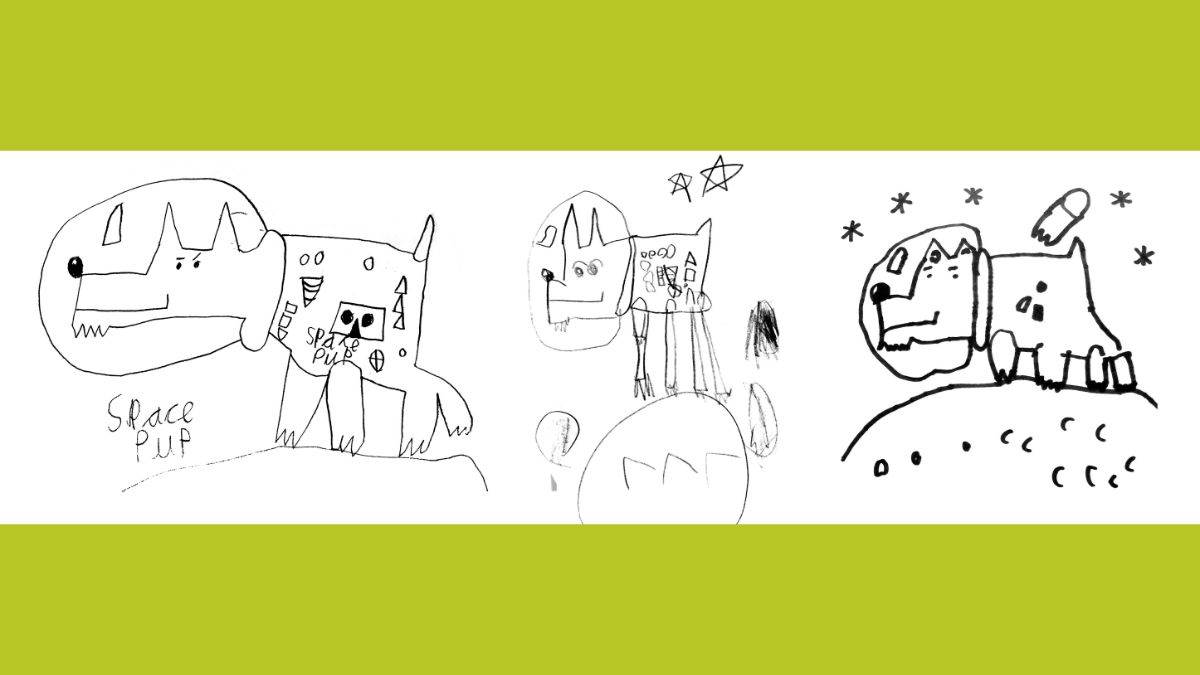
(If possible, I think it’s much better for children to draw with a softer pencil than a HB. 2B, 3B and higher B numbers will give nicer, less scratchy line. A dark colouring pencil can be good too. I’m a big fan of using a black or dark coloured felt tip pen for drawing – you can’t do any rubbing out with a felt tip, so you really have to go for it. If you are drawing in pencil, try to avoid rubbing out as much as you can.)
If you tend to draw very small on the page, have a go at drawing a bit bigger. You might like it!
When you’re drawing a face, it’s usually best to start with the shape of the face first and then add the features. Remember that the eyes and the tops of the ears are at roughly the same height. There are all kinds of ways to draw eyes, from simple dots to very detailed eyes with eyelids and eyelashes, but it’s the eyebrows that can really show how your character is feeling – along with the shape of the mouth.
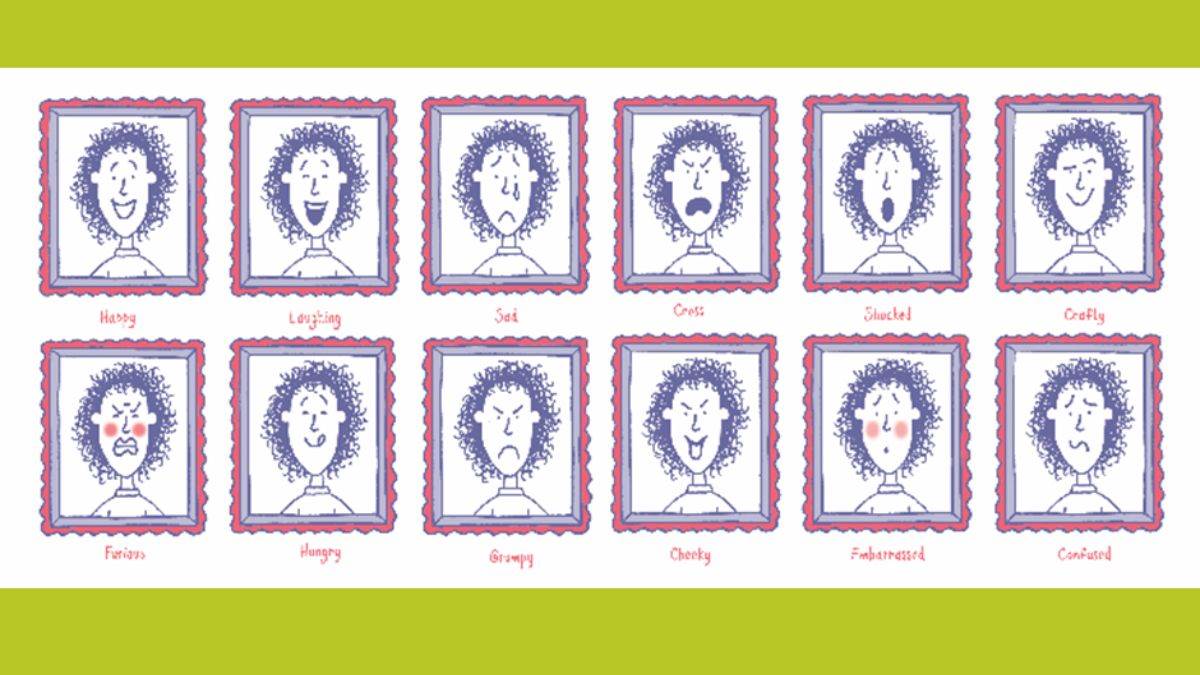
You don’t always have to draw faces straight on. It’s fun to draw them from the side sometimes, especially if you’re drawing lots of people in a crowd.

When you’re drawing bodies, don’t forget that people have shoulders. I never thought about that when I was a boy, and I couldn’t work out why all my characters ended up so thin!
With hands, draw the thumbs at a slightly different angle to the fingers and make them a bit shorter.
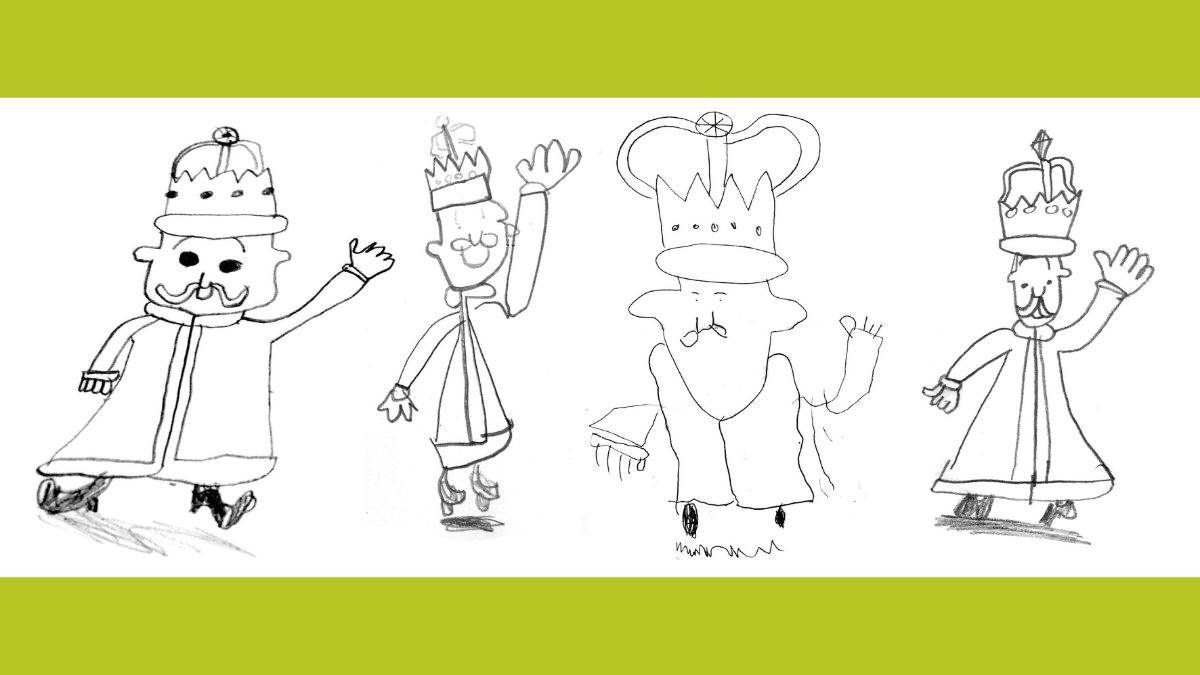
Think about the hairstyle you give your character. If you’re drawing someone who’s neat and tidy, you could give them neat, tidy hair. If they’re a bit wild, maybe give them wild hair!

Put a little shadow under your person, animal, vehicle or whatever, and it will instantly look like it’s standing on the ground rather than floating in space.
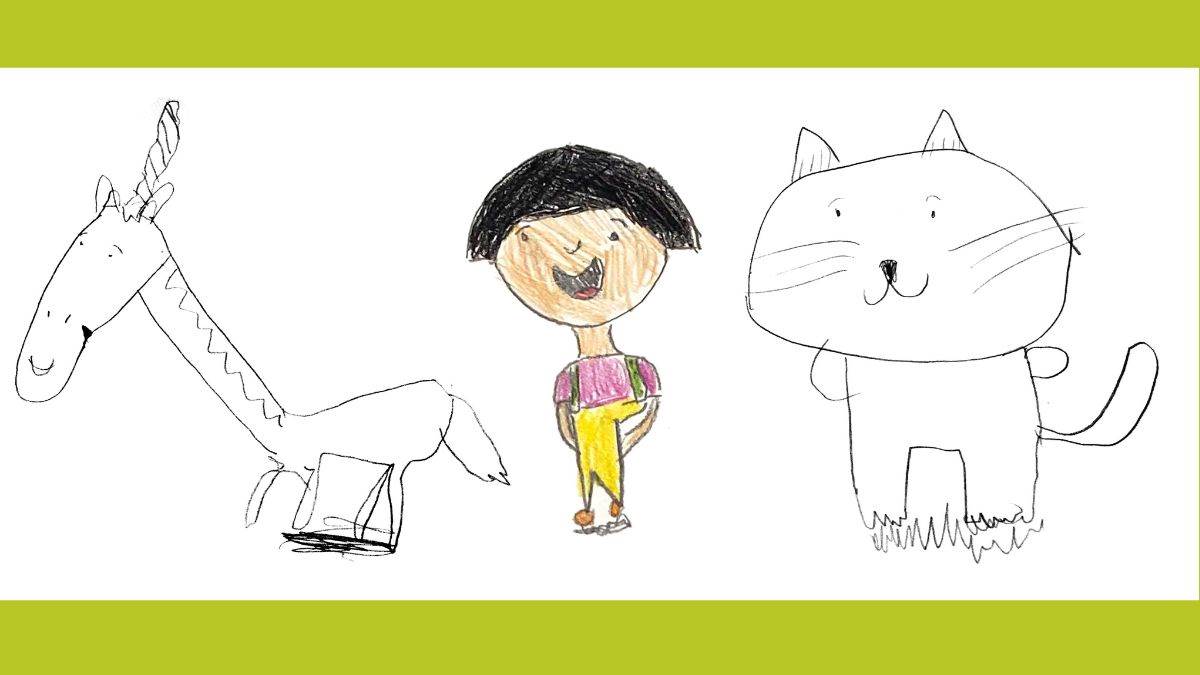
Adding patterns to clothes and drawing in little things like buttons, pockets and cuffs will make your characters more interesting to look at.
If you carefully draw a line right across the page, remembering to go behind your character or characters, you’ll create a horizon to draw things on. These things can be smaller than your main character because they’re further away.
If you have a lot of empty sky in your picture you can always fill the space with clouds. And to show that ground is covered in grass, it can be good to draw the odd clump or a few tufts here and there.
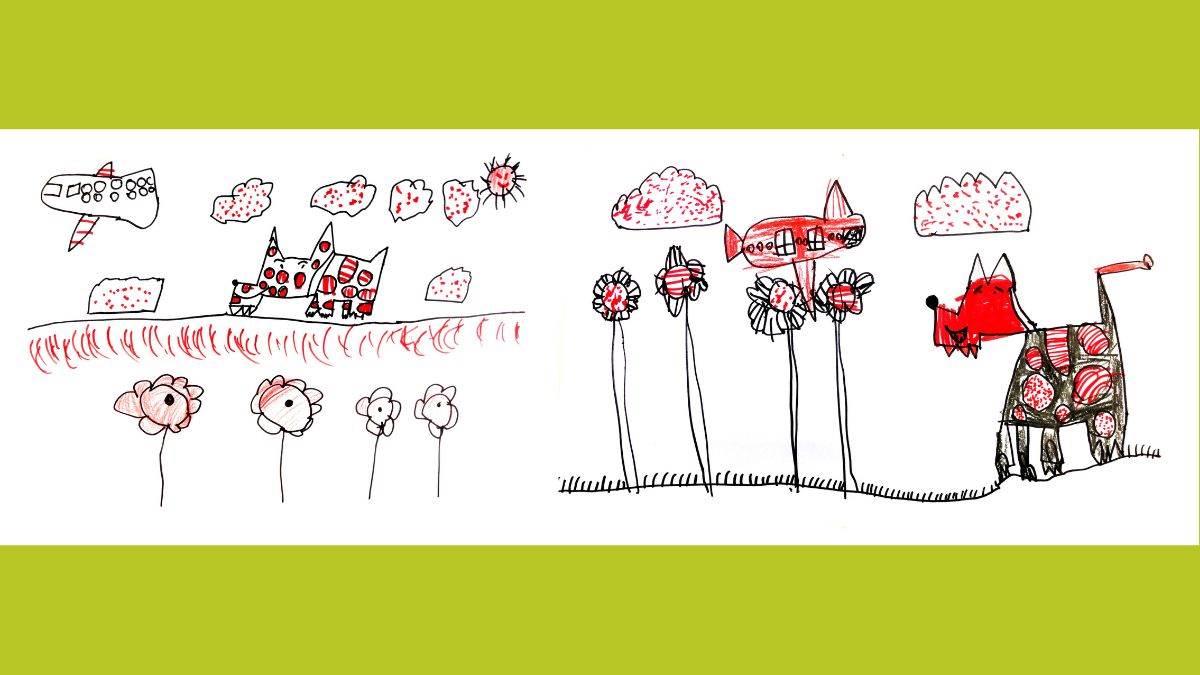
Small details often make quite a difference to a picture. At primary school I discovered my trees looked better if I took the time to draw the lines of bark on the trunks and bigger branches. It’s something that I still do today.
There are lots of other things I’ll say whilst I’m drawing and the audience is drawing with me: that the outline of this head is like an upside-down pear, that the front bit of this horse’s face is sock-shaped, that this person has a nose the same shape as a horseshoe… Using this kind of descriptive language does seem to make the process nice and easy for everyone to follow and the resulting pictures can be amazing.
But I’m sure what is happening too is that the children are enjoying the novelty of watching a grown-up having fun creating a picture, and it’s inspiring them. The American author and illustrator Mo Willems says a major reason children stop drawing is that they don’t see adults drawing, and I think he’s hit the nail on the head. So perhaps the best suggestion of all is for you grown-ups who claim not to be able to draw, to throw aside your inhibitions and enjoy some proper drawing sessions with your children. It will be great for the both of you!
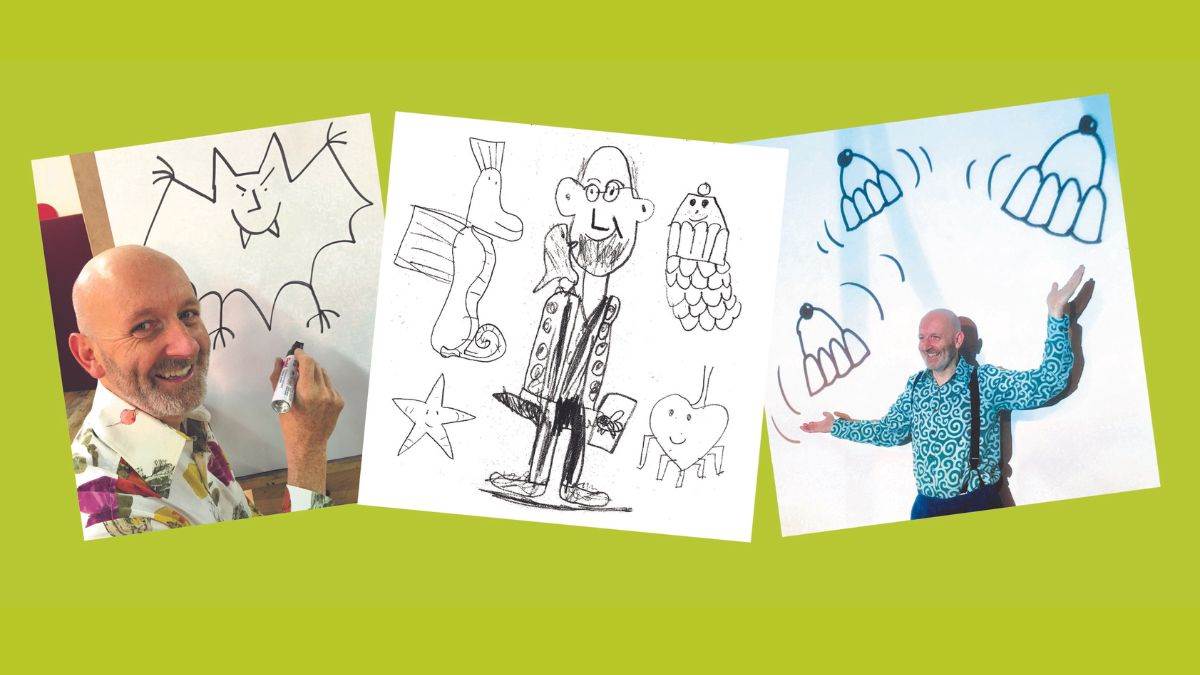
If you need further inspiration, Nick’s book How to draw the World of Jacqueline Wilson is full of tips for drawing all kinds of things from fancy shoes to flying saucers, as well as favourite Jacqueline Wilson characters.
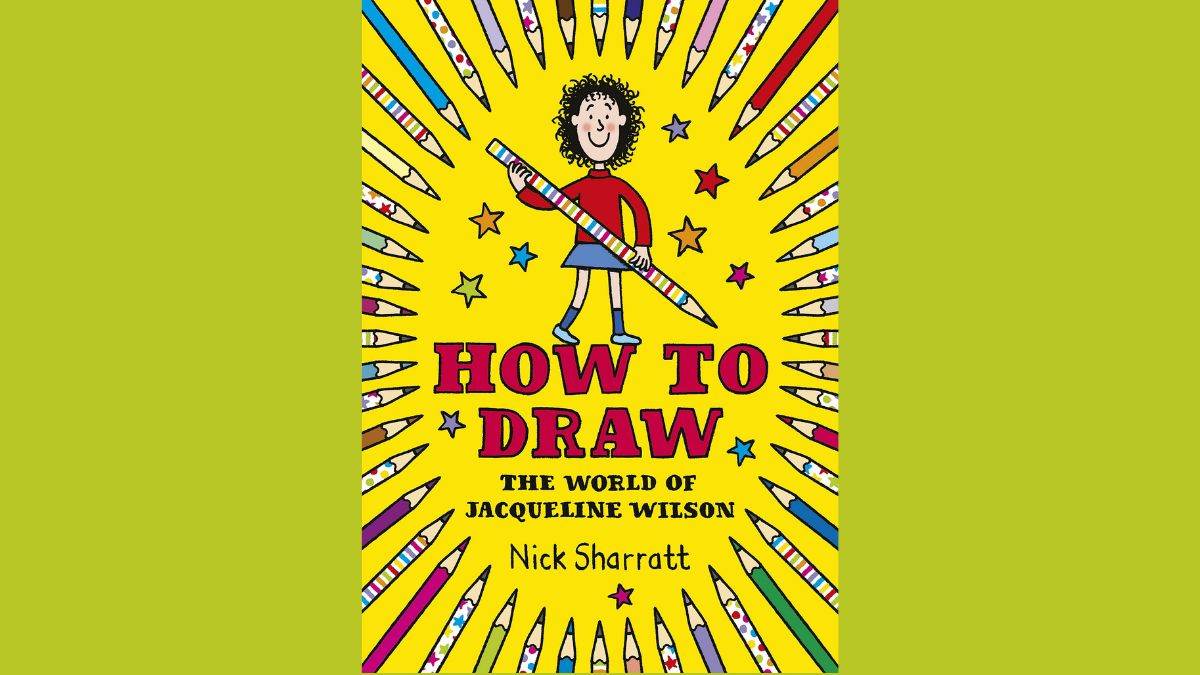
Nick will be touring the country again with his live Drawalong show in February and April 2023.
Topics: Writer in Residence, Features, Nick Sharratt
